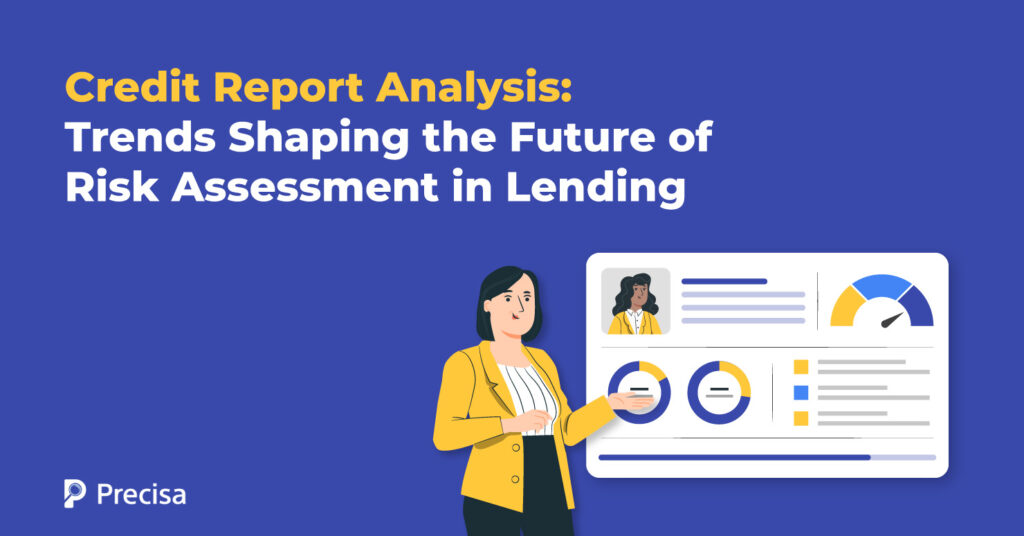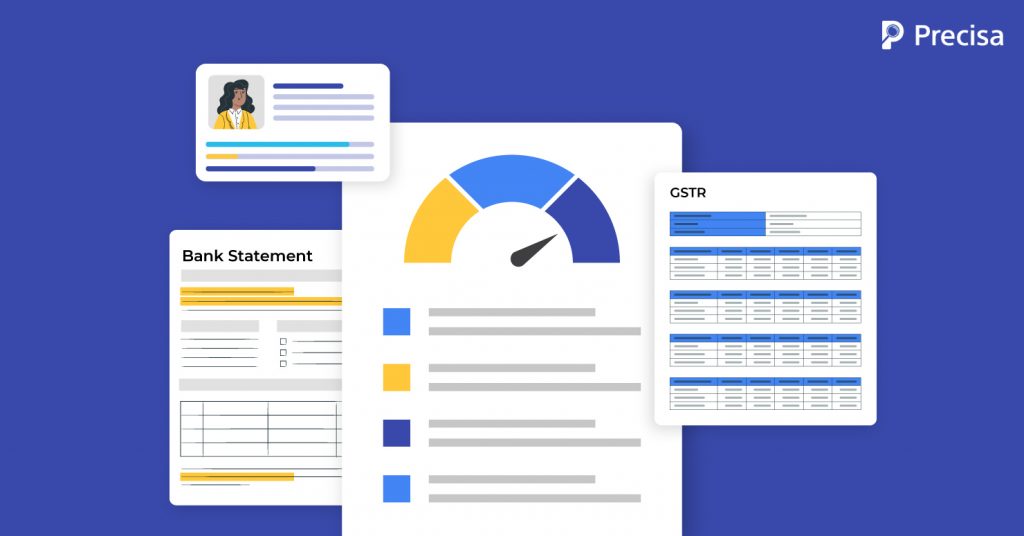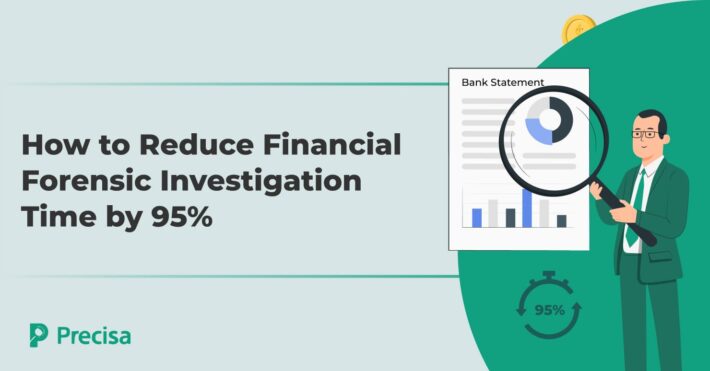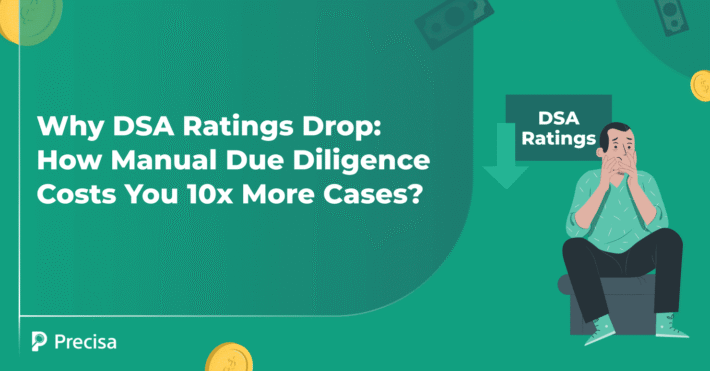Credit Report Analysis: Trends Shaping the Future of Risk Assessment in Lending

Analysing a potential borrower’s creditworthiness comes with multiple challenges. For instance, lenders struggle with limited access to a borrower’s financial data, manual underwriting processes, and inadequate fraud detection techniques. These challenges reduce the accuracy of credit report analysis. On the other hand, borrowers remain at the receiving end of a slow turnaround on loan applications.
However, technological advances are completely transforming how lenders analyse the ability of borrowers to repay their loans on time. These innovations are not only benefiting lenders but also empowering borrowers to take control of their credit health.
As a result, there has been a significant increase in credit awareness among Indian consumers.
As of March 2024, approximately 119 million Indians have monitored their CIBIL Scores. The number of consumers monitoring their credit profile grew by 51% year-over-year in FY23-24.
In this article, we outline some credit report analysis strategies that are changing the game for lending operations.
What is Credit Report Analysis?
Credit report analysis is a structured process used by lenders to evaluate the creditworthiness of a potential borrower. Essentially, the lender is attempting to predict the borrower’s ability to repay a loan in the future, based on historical data.
Accuracy, efficiency, and data-centricity are important principles of superior credit reporting. Lenders need to become more strategic in their approach to analysing a borrower’s creditworthiness.
For instance, by adopting AI-based tools such as a financial statement analysis software, they can comprehensively analyse all the data, and arrive at an accurate underwriting decision.
Now, let’s explore some emerging trends in superior credit report analysis, which are transforming business for lenders.
6 Transformative Credit Report Analysis Trends

Here is a snapshot of vital analysis trends that help lenders reduce risk and scale faster:
1. Automating the Credit Analysis Process
As the volume of data and the scale at which lenders aim to grow accelerates, manual attempts at financial analysis can result in delays, data omissions, and calculation errors. This approach also slows down the underwriting process and increases the potential for missing data.
This is where automated bank statement analysis can bring more efficiency to the underwriting process.
For instance, key financial documents of borrowers can be directly pulled from bank aggregators with borrower consent. Data from bank statements, balance sheets, invoices, and other documents can be directly extracted, and allocated to relevant cash inflow and outflow categories. This segregation provides clarity on cash flows.
Similarly, automating all analysis processes enables swift and accurate credit report analysis.
2. Leveraging Multiple Data Sources
The financial data of a borrower can be quite extensive. For a more comprehensive analysis, it is important to analyse multiple data sources.
For instance, these can include bank statements, credit card statements, invoices, balance sheets, and Goods and Services Tax (GST) returns.
Lenders can cross-check the authenticity of transactions across the length and breadth of financial documents. This also opens the doors for first-time borrowers with positive cash flows to qualify for a loan.
3. AI-Powered Fraud Detection
With the growth of digital transformation, the potential for lending fraud has also grown. It can occur in three ways—the submission of fake documents, fraudulent transactions, and identity-related fraud.
The use of Artificial Intelligence (AI) in financial analysis solutions flag unusual transaction patterns. It can recognise minute differences in documentation, and run a thorough check on data connected to a borrower’s identity. This significantly brings down the risk of lending fraud.
4. Harnessing Predictive Data Analysis
Today, businesses across several sectors are harnessing the power of predictive data analytics to drive diverse outcomes. These include reducing risks, understanding customer behaviour, and forecasting future outcomes. In the context of lending, predictive data analytics can be harnessed to forecast the ability of a borrower to repay a loan in the future. Lenders feed in historical data related to a borrower’s past loan repayment behaviours and patterns to predict future outcomes.
For example, a higher number of Days Past Due (DPD) negatively impacts the results of credit report analysis. In turn, these numbers offer a more accurate picture of a borrower’s credit standing.
5. Data-driven Creditworthiness Score
Lenders are also using superior analytical tools to derive an independent creditworthiness score for borrowers completely based on data. Lenders can use the score to make data-driven decisions.
This approach helps eliminate cases of bias and make accurate decisions based on a business’s potential to repay a loan.
6. Customised Solutions for Borrowers
Superior credit report analysis can also deliver more value for borrowers and lenders. For instance, by adopting the use of bank statement analysis software, they can take advantage of customised loan product recommendations.
Solutions are automatically generated by the software, and they serve a borrower’s credit needs while aligning with their cash flows. So, rather than offering standardised products, lenders have an opportunity to stay relevant and inclusive in their offerings.
Major Benefits of Credit Report Analysis
The snapshot of key benefits for lenders who adopt strategic analysis:
Reduced Risk of Doing Business
Based on a mix of factors such as cash flows, past loan repayment behaviour, and capital access, lenders can assess a borrower’s potential to repay a loan.
They can run the numbers for diverse scenarios, ranging from market downturns to business slowdowns caused by internal factors.
Efficient, Error-free Operations
Lenders can simplify the underwriting process. They can bring more efficiency and accuracy to credit report analysis outcomes.
Moreover, lenders can ensure quick turnaround of loan application approvals, thus expediting the conversion of loan applicants into customers.
Reduced Operational Costs
The use of technology enables lenders to disrupt the way they function. They can run their entire operations with lean teams and reduce the costs of expensive operations.
Also, they get to reduce the opportunity costs associated with turning down prospective customers with healthy cash flows, due to a lack of credit history.
Accurate Credit Risk analysis results in lower costs associated with the debt recovery function as well.
Higher ROI
By addressing existing challenges through the smart use of technology and strategy, lenders can reduce Non-Performing Assets and loan delinquencies. They can focus on increasing revenues and improving the overall profitability of their loan portfolios.
The Takeaway
By adopting the use of strategic tech-enabled credit report analysis solutions, lenders can bring efficiency and accuracy to lending operations.
Partnering with an expert in AI-powered financial analysis solutions paves the way for transformative lending. The key outcomes include strategic analysis and reduction of NPAs and loan delinquencies. This way, lenders can drive conversion, revenues, and profitability.
Presica’s comprehensive financial data analysis and credit report analysis solution simplifies and speeds up the process through automation.
The software provides actionable insights on a customisable dashboard, thus helping companies make informed business decisions.



